GERMAN OWNERSHIP
Engineering group Vickers decided to sell off its automotive interests in 1998 to focus on its core business, and Rolls-Royce was put on the market. BMW’s close relationship with the company, as a supplier of engines and other components for both Rolls-Royce and Bentley cars, immediately made it a front runner among likely new owners. However, at the last minute the Volkswagen Group trumped BMW’s purchase offer of £340 million by one of £430 million.
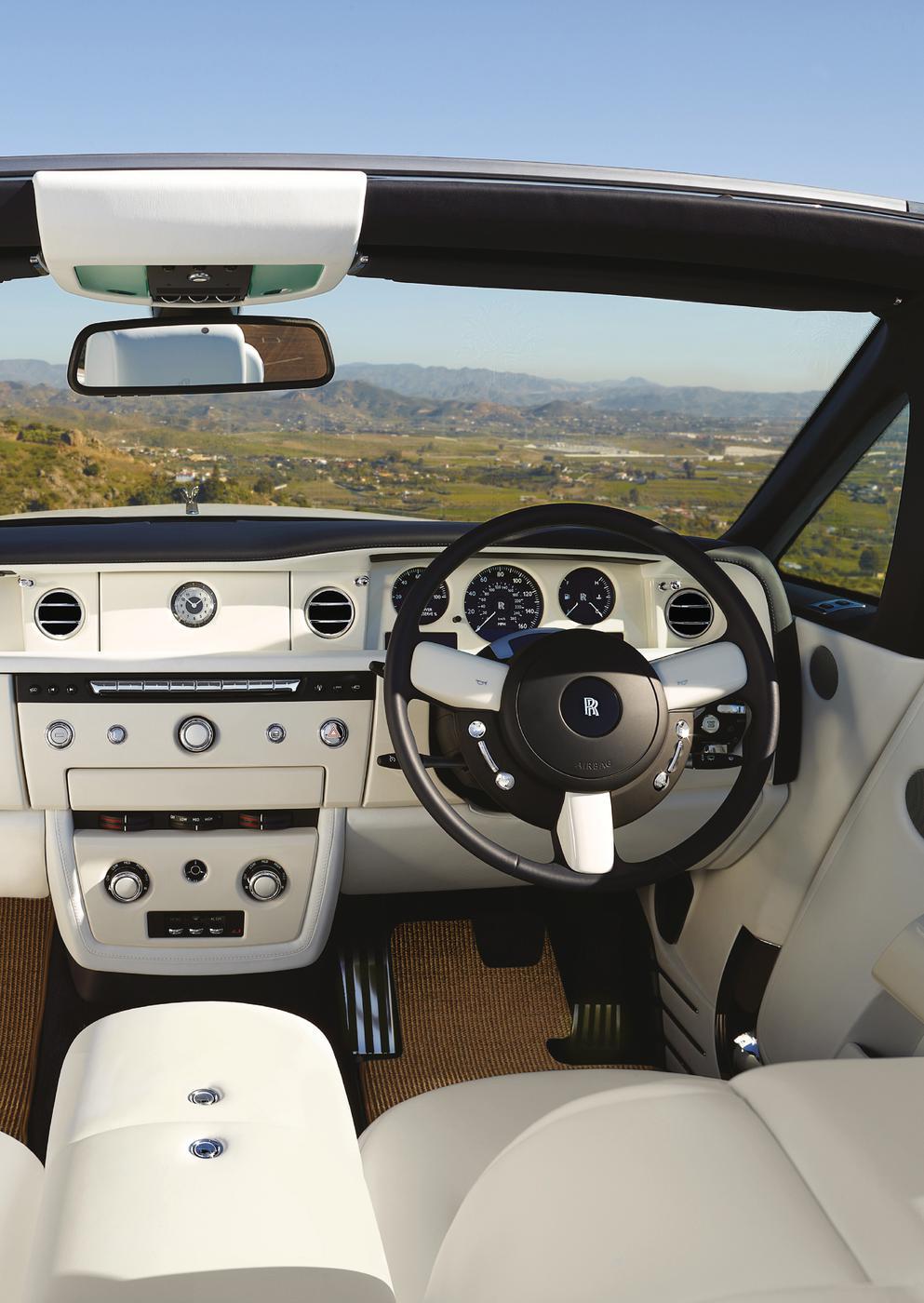
The dashboard design of the Phantom Series II was remarkably uncluttered, despite the wealth of on-board technology. Interestingly, the traditional wood trim is absent from this Phantom Series II Drophead Coupé.
That Bentley would now belong to the Volkswagen Group was never really in dispute, but BMW were determined to fight hard over the Rolls-Royce brand. A complicated and messy series of moves and counter-moves, negotiations and veiled threats then followed. Eventually, the deadlock was broken in July 1998. Broadly speaking, from 1 January 2003, full rights to manufacture Rolls-Royce cars would belong to BMW, and full rights to manufacture Bentley cars would belong to Volkswagen. But Volkswagen would retain all the old Rolls-Royce assets, including the Crewe factory. All BMW really gained was the right to use the name, the grille shape and the Spirit of Ecstasy mascot on motor cars.
As an interim arrangement, the existing Bentley and Rolls-Royce models would continue to be built at the VW-owned factory in Crewe. BMW agreed to continue supplying engines for the cars and would allow use of the Rolls-Royce name on cars built at Crewe. So the pressure was on BMW to develop a new Rolls-Royce and build the factory to assemble it within the remarkably short period of three and a half years. It is to their credit that they achieved both targets, the new factory being erected at Goodwood in Sussex and the new Rolls-Royce Phantom reaching the showrooms during 2003. The new makers of Rolls-Royce motor cars were now known as Rolls-Royce Motor Cars Ltd.
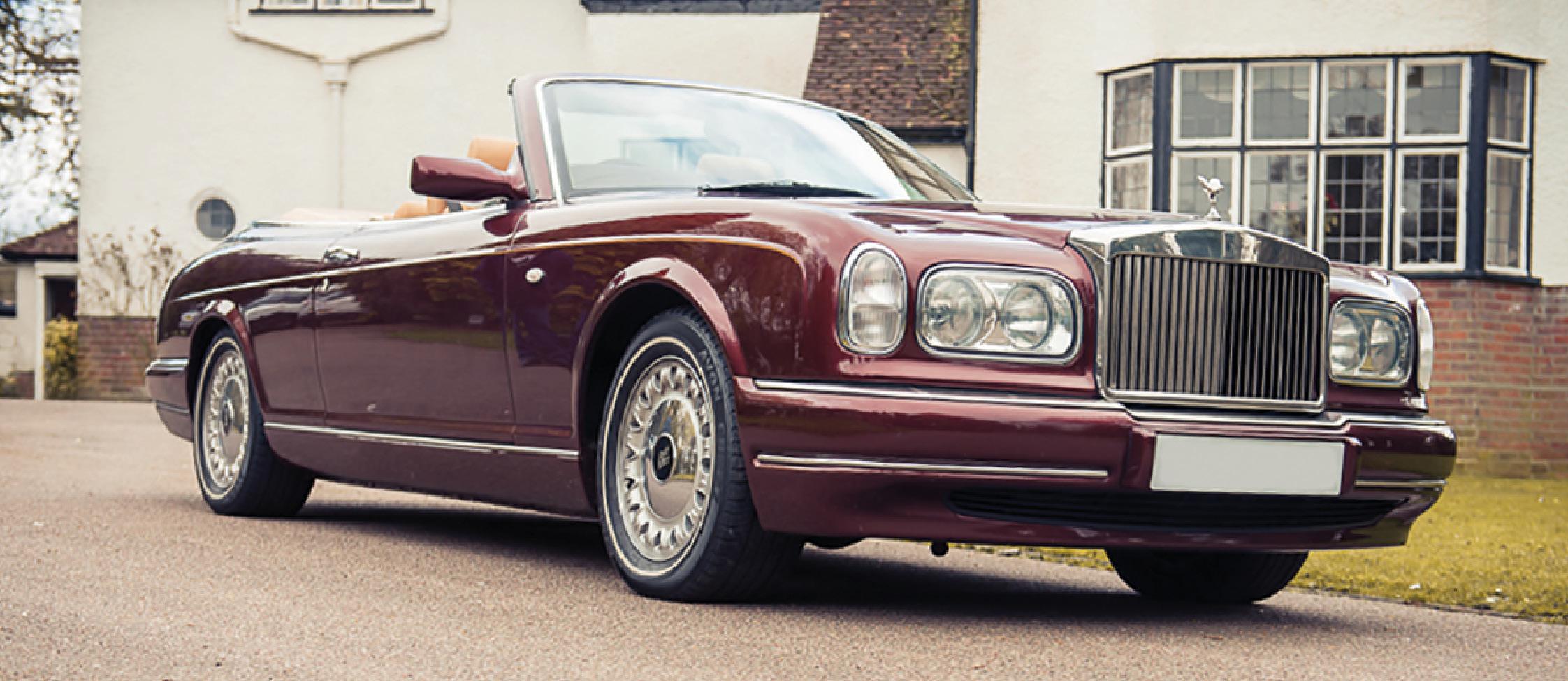
Bridging the gap between the old and the new was the Corniche V, a classic convertible model with a well-established name, which combined mechanical underpinnings developed for a Bentley with styling cues from the Silver Seraph.
One splendid anachronism bridged the gap during this uncertain period. There had been no convertible Rolls-Royce since 1994, when the last Corniche IV had been built, and the marque’s custodians believed there would be custom for a new one. In order to minimise costs, they based it on the existing Bentley Azure convertible, which was powered by the latest development of the long-serving 6.75-litre V8 engine. Body styling cues were taken from the Silver Seraph, and the new car became the Rolls-Royce Corniche V. It was a rare example of a new Rolls-Royce being based on an existing Bentley rather than the other way round.
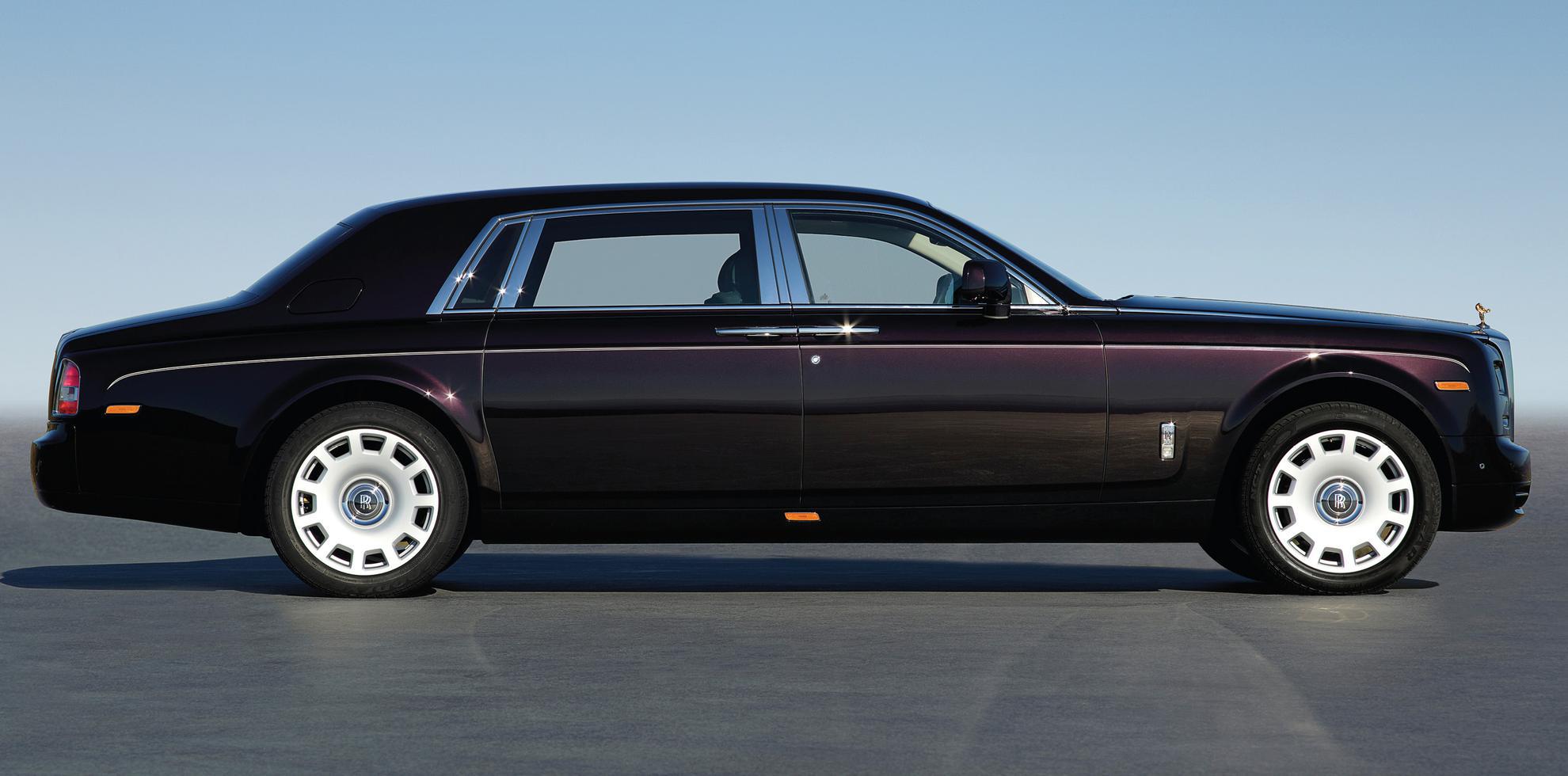
The new Phantom was a massive car in all its forms. This is in fact an Extended Wheelbase model dating from 2012, with the longer rear doors characteristic of the model.
The new Corniche was introduced in early 2000 and was built at Crewe for just under two years, the last example leaving the assembly lines in August 2002. Symbolically perhaps, it was also the very last Rolls-Royce car to be built at Crewe before the plant was turned over entirely to Bentley assembly. Just 384 of these 135mph Corniche V models had been built.
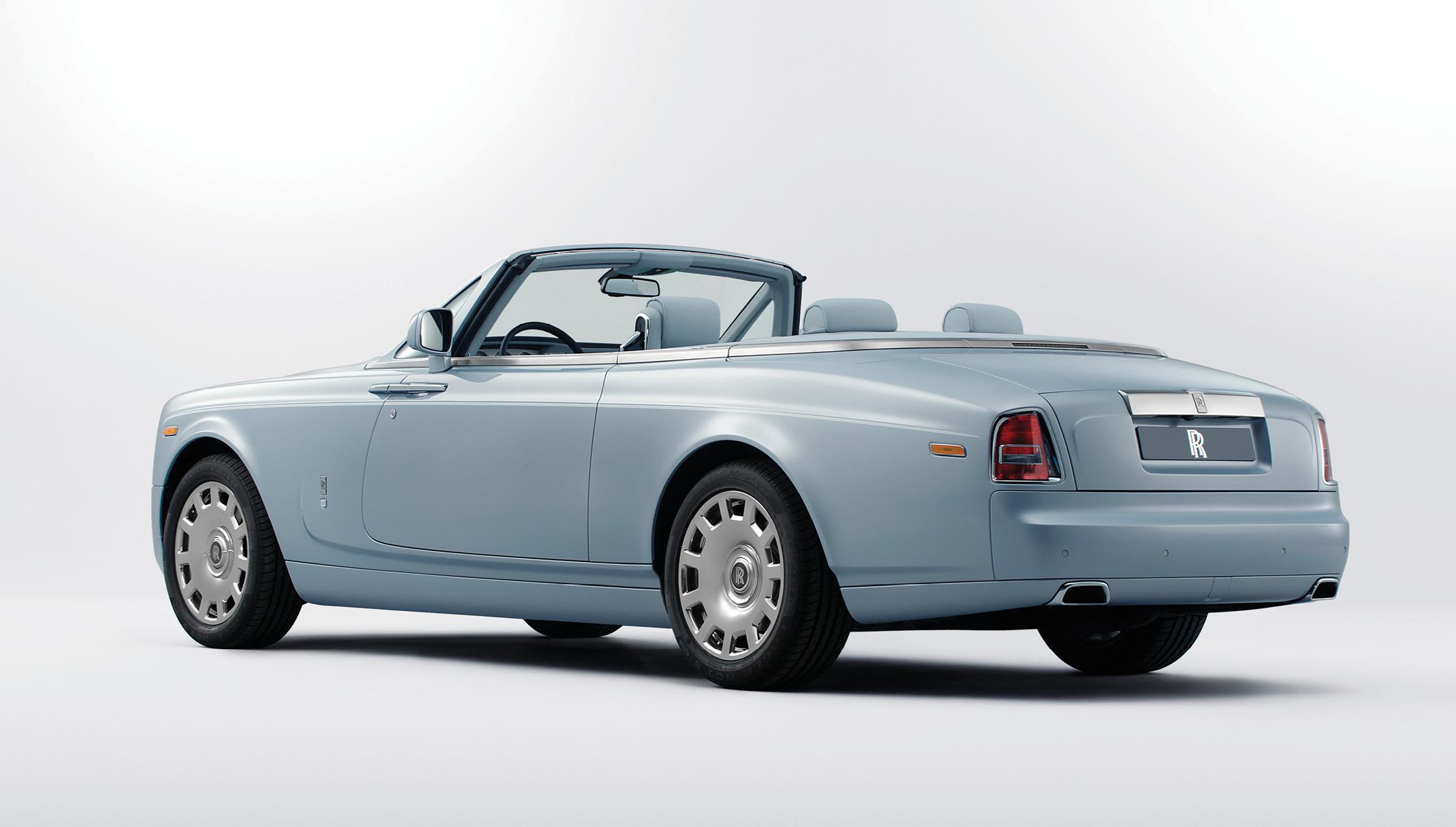
The Phantom Drophead Coupé sat on a shorter wheelbase than the saloon, and of course had only two doors. The tail lights and styling lines on the flanks were those of the parent car. By the end of production, Rolls-Royce were calling it a Phantom VII.
The new Phantom for 2003 was the seventh Rolls-Royce model to bear that name, but carried no number to indicate this. It was nevertheless conceived as a low-volume, ultra-expensive grand limousine in the tradition of earlier Phantoms, and would be built only to individual order. BMW planned to use it as their technology flagship, and designed for it a special 6.75-litre V12 engine after rejecting a planned 9-litre V16 as too extravagant.
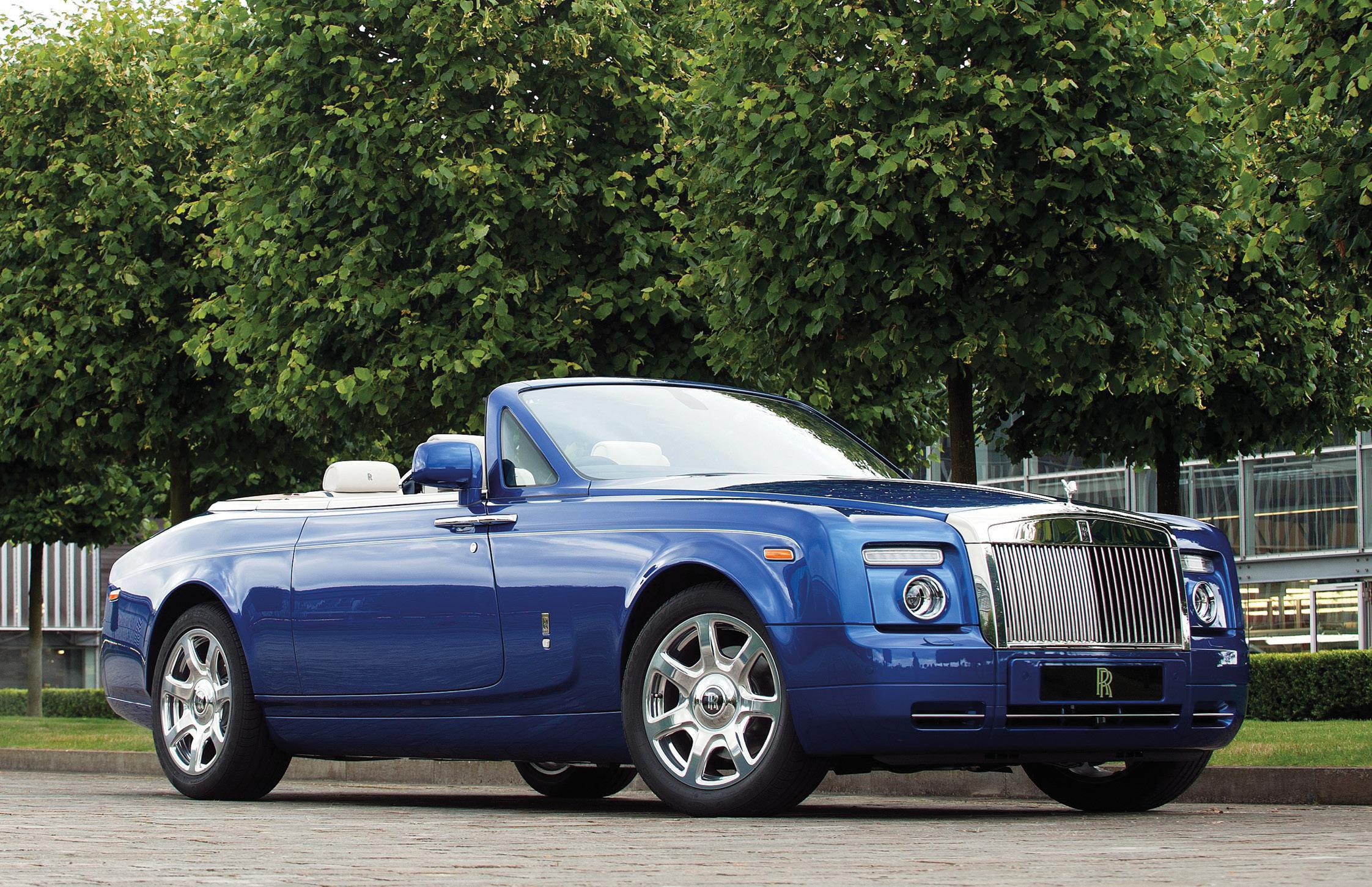
The original Phantom front end design with its slit-like headlights and round driving lamps is seen here on a bespoke Phantom Drophead Coupé dating from 2011.
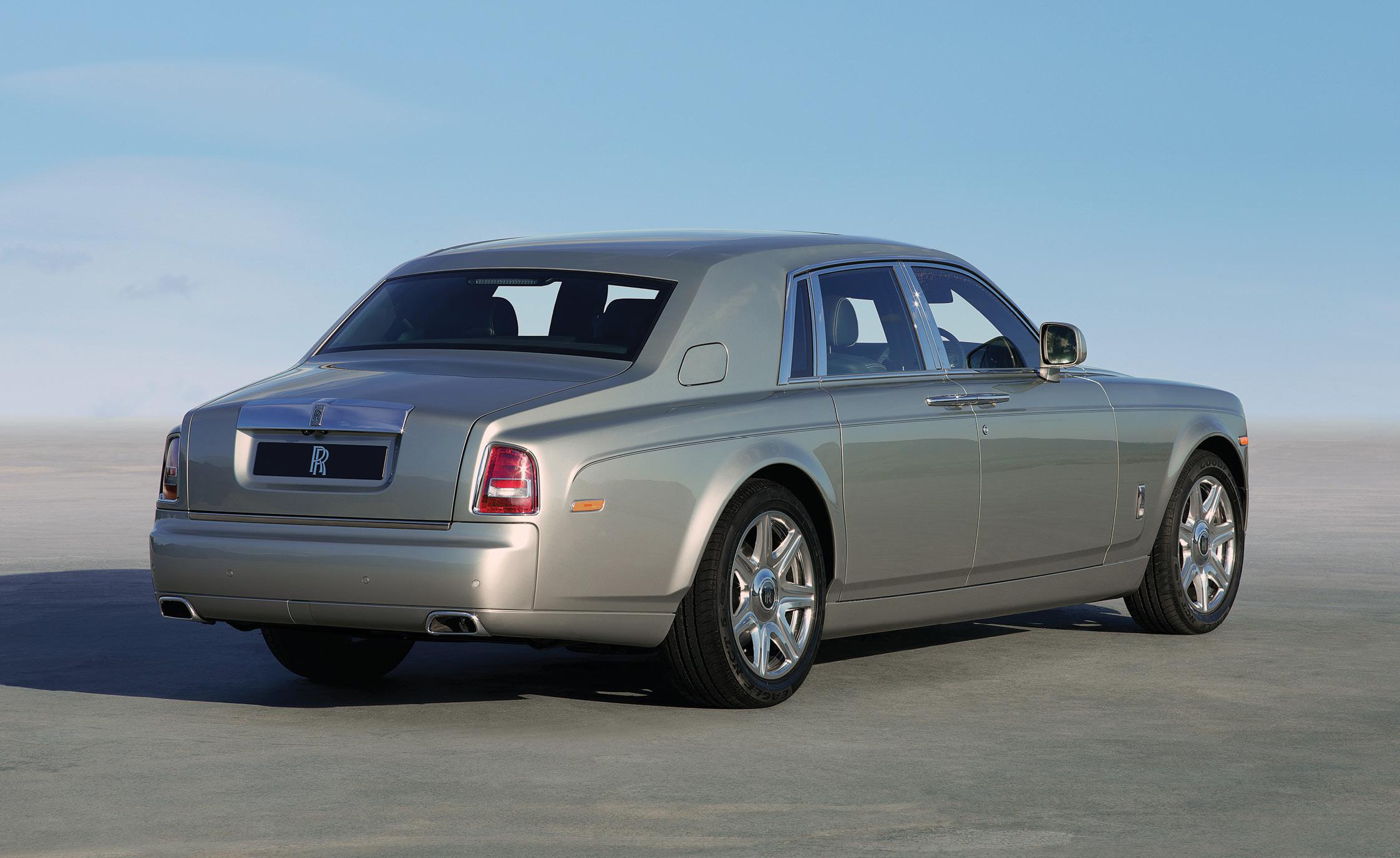
The Phantom models became Series II types for 2012, but retained the essential lines of the original. Even careful design was unable to disguise the sheer size of the car.
The Phantom’s body was constructed from lightweight aluminium, and the car ran on air suspension to give top-quality ride comfort. The body design was undeniably imposing, but some commentators found it hard to relate to the Rolls-Royce cars that had gone before. Slit-like headlamps gave it a very distinctive appearance, while rear-hinged ‘coach doors’ eased entry and exit from the rear seats, and of course there was a massive list of options available through the Rolls-Royce Bespoke programme. As in the marque’s 1930s heyday, customers could ask for anything within reason to personalise their cars.

There was increasing demand for two-tone paint schemes, which worked well on these large cars. This 2012 Phantom drophead coupé shows the redesigned front end of the Series II cars.
The Phantom range was developed through an Extended Wheelbase model in 2005, which added nearly 10 inches of rear legroom. In 2007 came a two-door Drophead Coupé derivative on a wheelbase shortened by 10 inches, and this was followed a year later by a Phantom coupé of the same size. Sales increased year on year, boosted by small-volume limited editions, some tailored specifically for certain markets such as China, where Rolls-Royce had been able to exploit the booming economy to advantage. That same year saw the availability of an armoured version of the full-size Phantom as well.
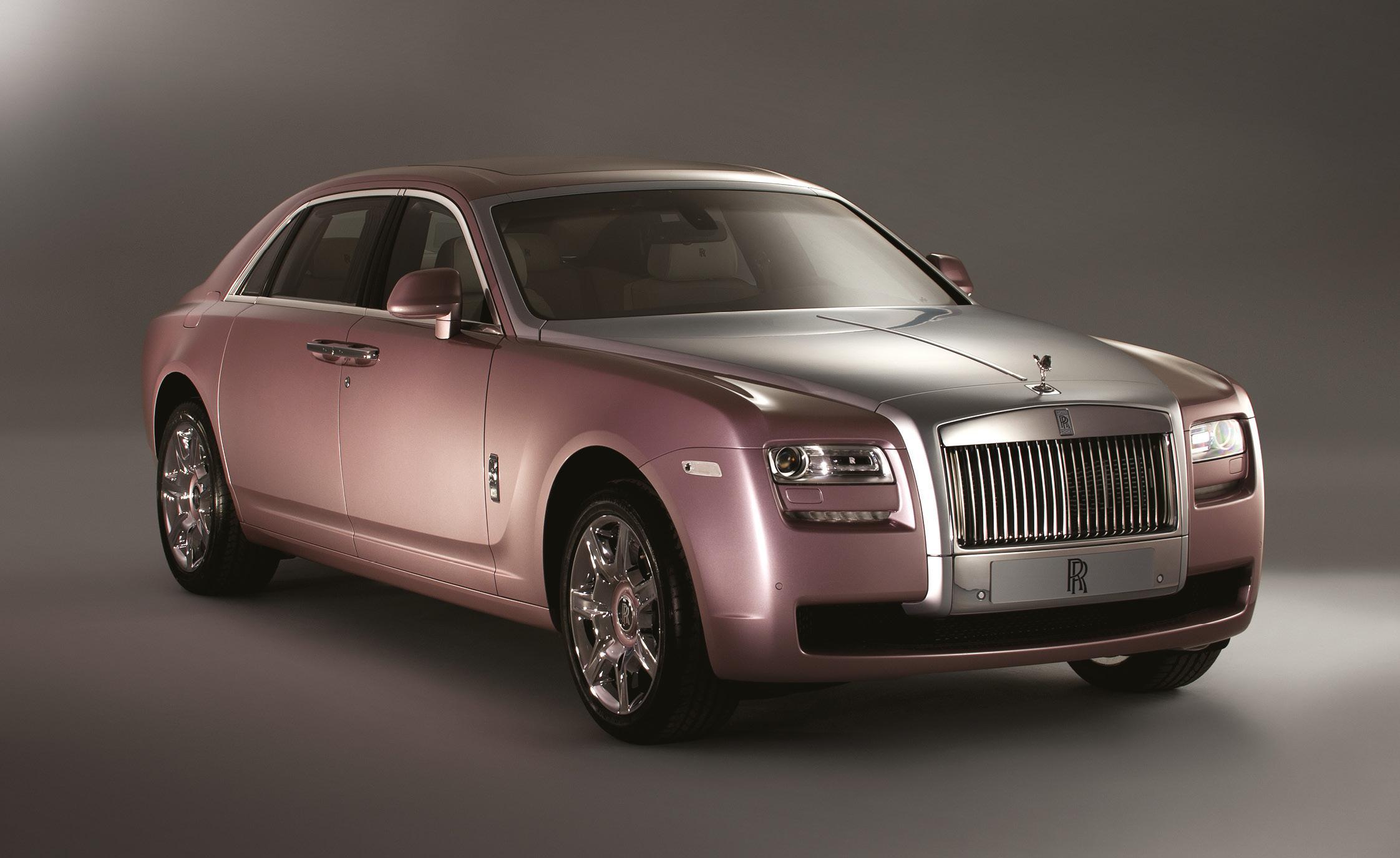
The Ghost was introduced in 2010 as the smaller Rolls-Royce model – but it was still a big car. This one, finished in Rose Quartz with a Gunmetal metallic bonnet, was a special order for Dubai. Demand for bespoke models such as this one accounted for 56 per cent of Ghost sales in 2011.
The Phantom was facelifted in 2012 and sales remained strong, aided as before by special editions. Production of all derivatives was brought to an end in early 2016, by which time the full-size car had been on sale for thirteen years, and Rolls-Royce promised a new Phantom in 2018.
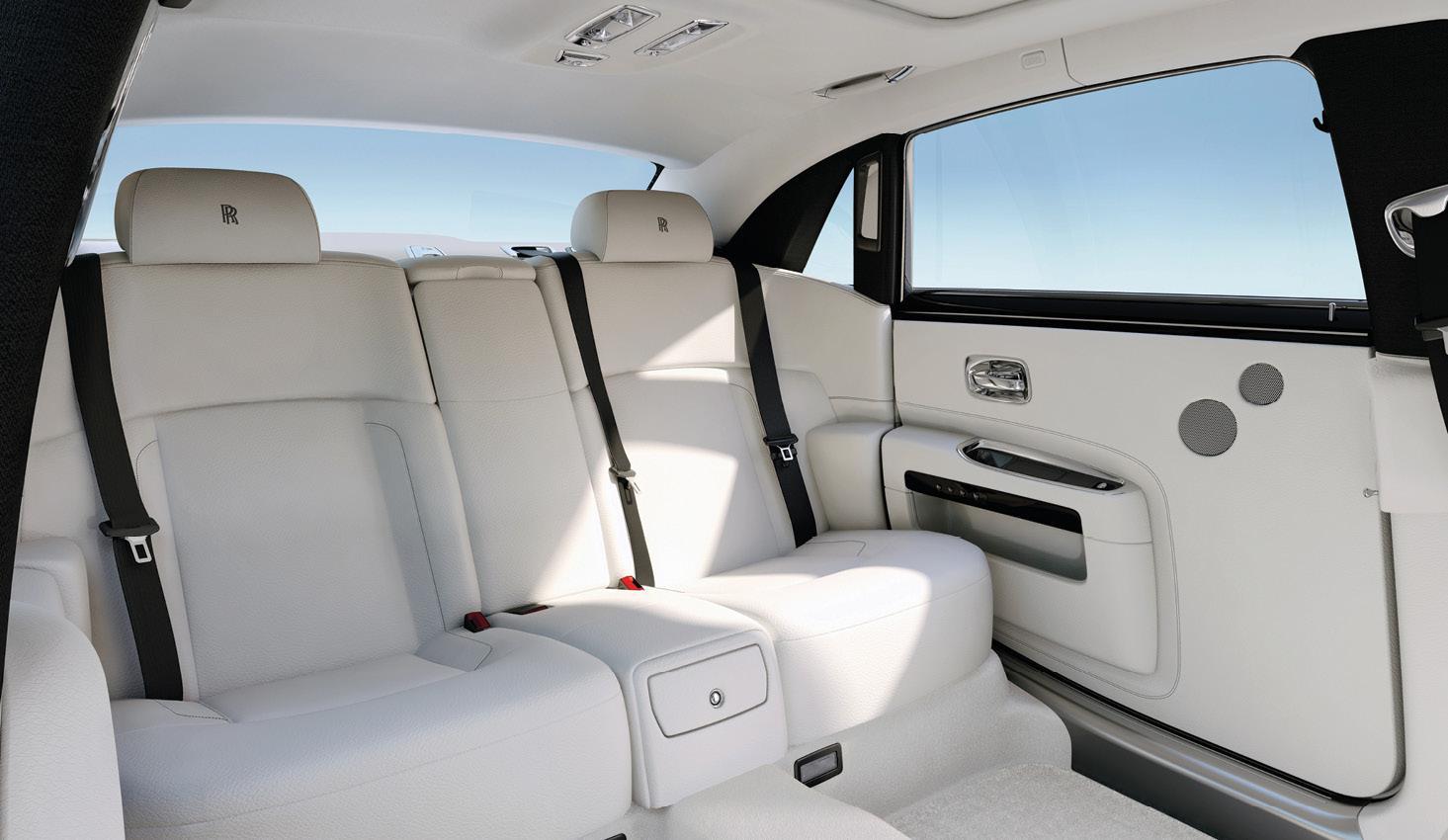
The Extended Wheelbase version of the Ghost offered as much lounging room as most rear-seat passengers could wish for. Note the provision of three seat belts so that a third passenger could be legally carried if the need arose.
The Phantom and its offshoots were never intended to be the only models from BMW’s Rolls-Royce company. However, it would be seven years before the anticipated smaller Rolls-Royce entered production, this one more of a direct replacement for the long-defunct Silver Seraph. The Rolls-Royce Ghost, introduced in 2010, was still a large car, though, and its wheelbase of 129.7 inches was just an inch shorter that than of the two-door Phantoms and 7 inches longer than that of a Silver Seraph.
The new ‘small’ Rolls-Royce shared around 20 per cent of its parts with the latest BMW 7 Series saloons, although the common features were not visible. Unlike the Phantom, the Ghost was constructed of steel. Its engine was also unique, a 6.6-litre twin-turbo V12 that boasted 570PS and made this car the most powerful Rolls-Royce ever built. It was very quick, too, not least so that it could counter rival saloons from Volkswagen-owned Bentley; Rolls-Royce claimed a 0–60mph sprint time of 4.7 seconds – and that for a car weighing nearly 5500lb (2495kg).
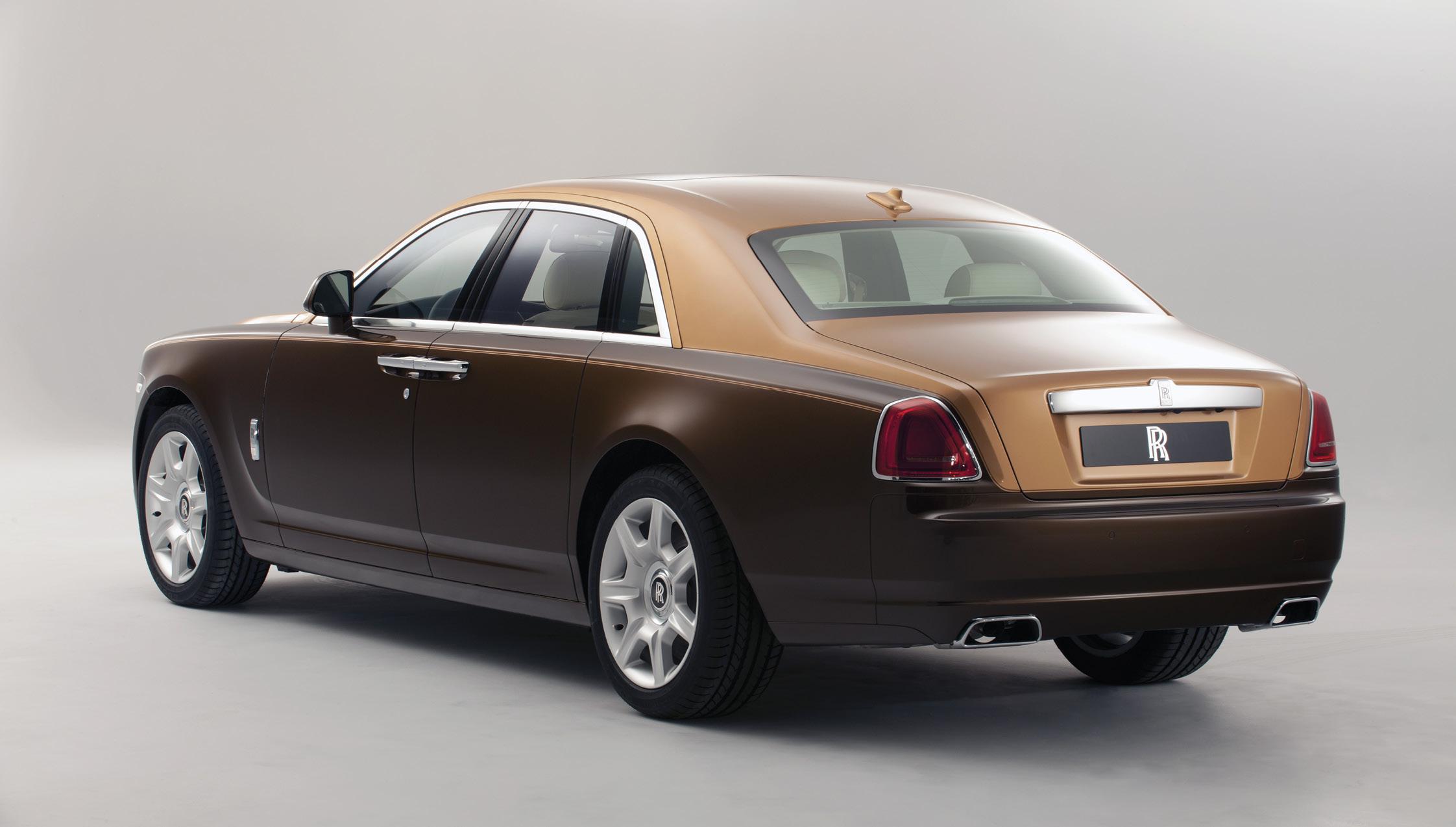
The Ghost was recognisably from the same family as the larger Phantom. This hugely attractive two-tone model dates from 2012.
Ever since the Silver Clouds of the 1950s, the standard four-door saloon had been accompanied sooner or later by a long-wheelbase derivative, and the Ghost Extended Wheelbase model arrived in 2011 with an extra 6.7 inches (170mm) between wheel centres. A limited-edition V-Spec model with 600PS was available on the standard wheelbase in the first half of 2014, just before the facelifted Series II Ghost was introduced, with new LED headlights and some interior changes.
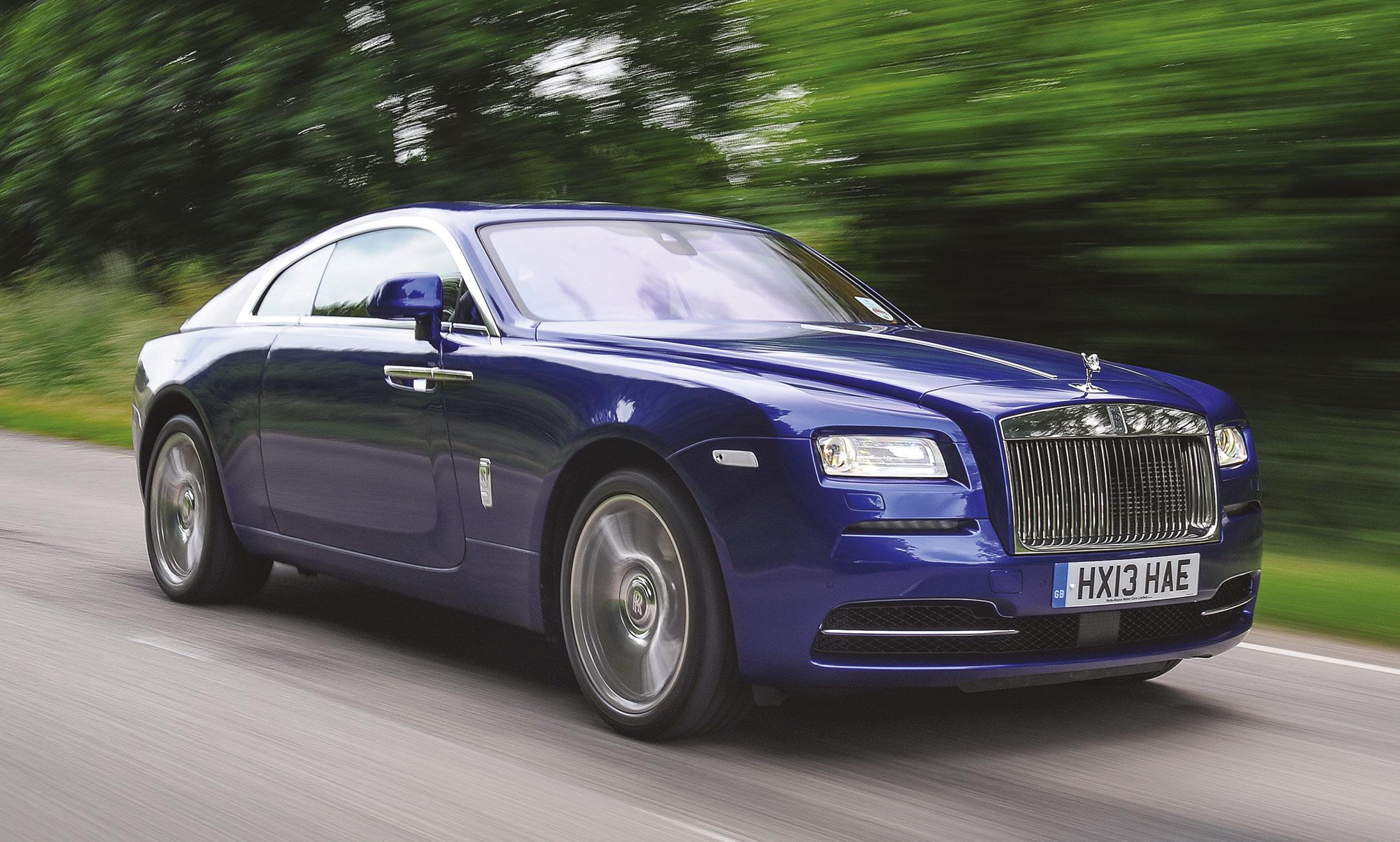
The Wraith two-door coupé with its stylish sloping rear achieved the difficult trick of retaining an impressive presence and combining that with a distinctly sporting appearance.
Again following familiar Rolls-Royce practice, the Ghost was developed to provide two-door ‘personal’ derivatives. The first to appear was the Rolls-Royce Wraith, a four-seat coupé on a shortened wheelbase of 122.5 inches that reached showrooms in 2013. It was followed in 2015 by the Rolls-Royce Dawn, a convertible on the same wheelbase and with visual similarities but with what the company claimed were 80 per cent different panels.
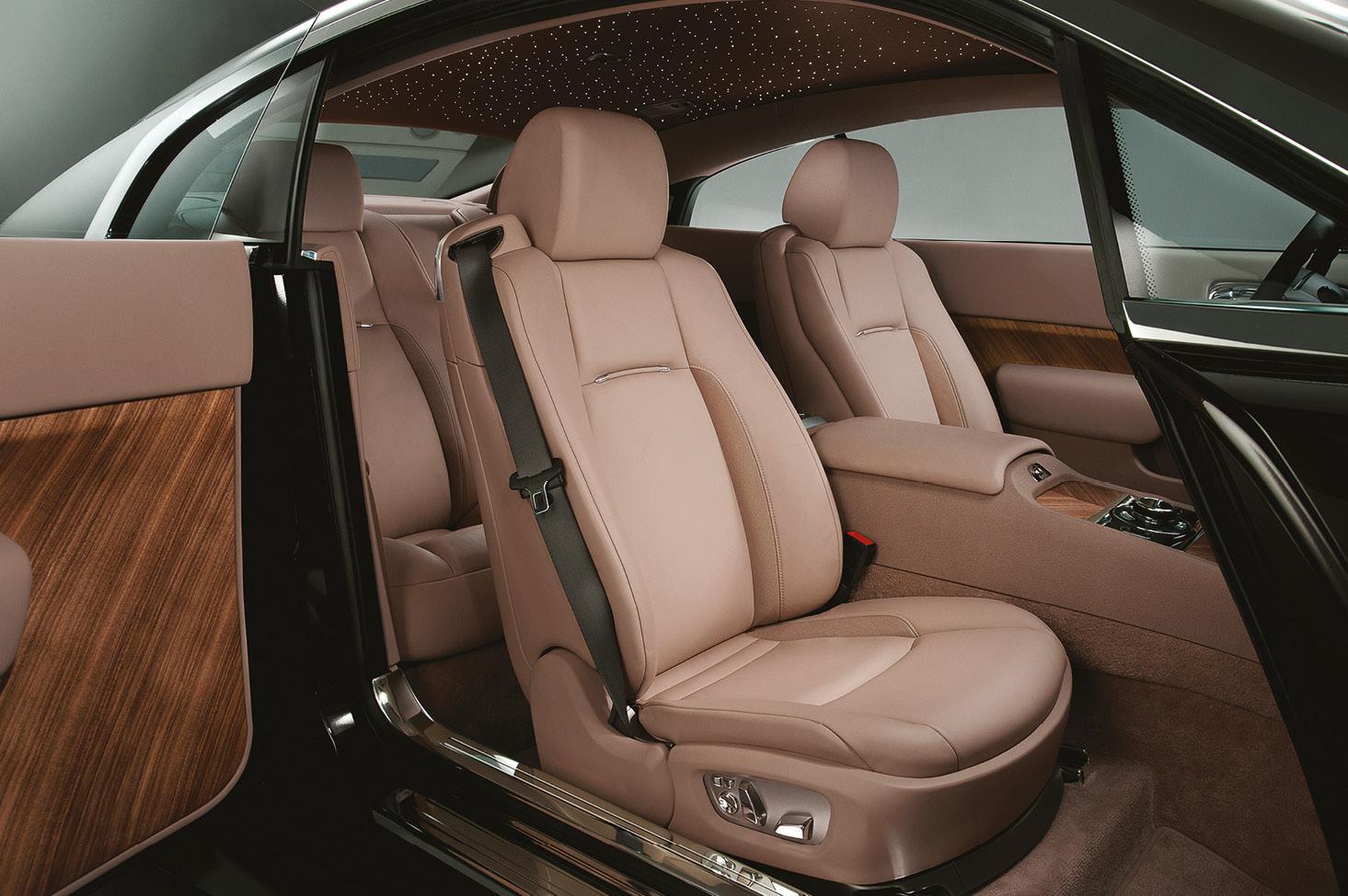
There was necessarily less room in the passenger cabin of the Wraith, but there was certainly no shortage of the traditional luxury features.
All these new models sold extremely well. Sales of the Phantom in 2003 had been just 300 cars, but by 2014 Rolls-Royce sales for all models combined had risen to 4,063 cars for the calendar year. Like other luxury car makers, the company had been able to exploit the huge growth in new markets such as China and Russia, and regular special editions continued to keep interest alive from buyers who wanted a car that was just a little bit different from that which their friends or colleagues had. It was not coachbuilding in the way that had been understood in the 1930s, but it was appealing very successfully to the modern descendants of those who had been Rolls-Royce customers eighty years earlier.
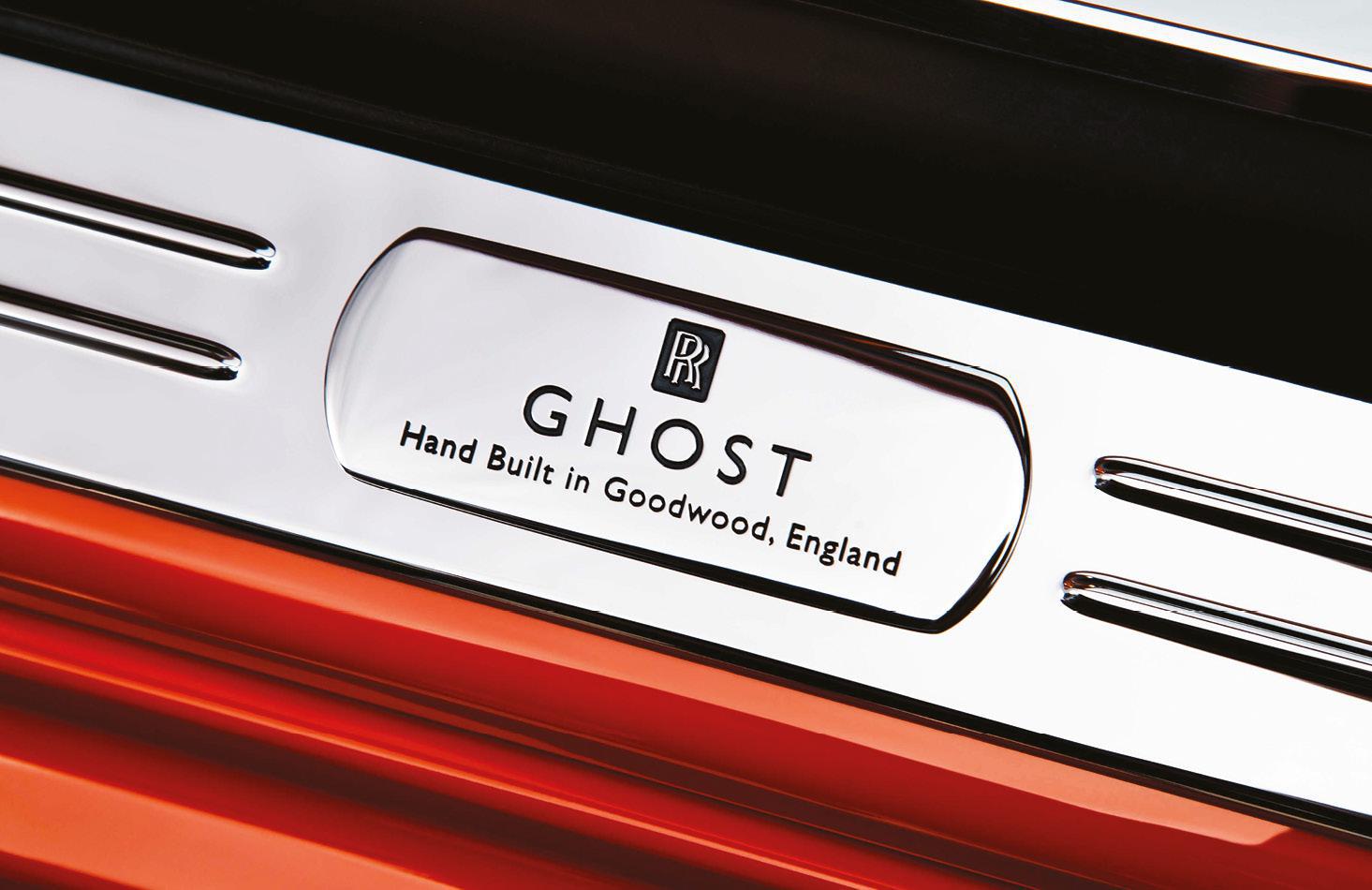
The great traditions remained alive and well under BMW ownership. This was the tread-plate on the door sill of a Rolls-Royce Ghost.
So, more than 110 years after the first Rolls-Royce motor car had made exceptional standards of quality available to those who could afford to pay for it, the marque still stood for the same values. It was becoming slowly more successful, too, and in 2015 announced plans for a completely new departure – a Rolls-Royce SUV that would be introduced in 2017 and which would compete with the Bentley Bentayga SUV that arrived in 2016. It looked as if the legendary marque was in safe hands.